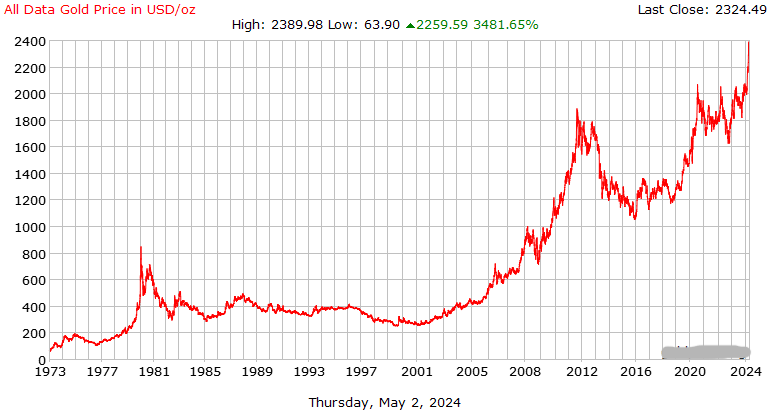Putting all your money into one investment is like ordering only one dish at a buffet—sure, it might be your favorite, but if it turns out bad, you’re stuck with a bad meal. The same goes for investing. Relying on just one type of asset, stock, or sector can be risky and unpredictable. That’s where knowledge on how to diversify your investments comes in. Helping you to keep your financial FOMO low and make good decisions.
Why Learning How to Diversify Your Investments is Crucial
A well-diversified portfolio spreads risk, protects you from market downturns, and increases your chances of long-term financial growth. Relying too heavily on a single stock, sector, or asset class can leave you exposed to sudden market crashes, economic downturns, or industry-specific setbacks. Diversification acts as a safety net, ensuring that when one investment struggles, others can help balance out the losses.
But how do you diversify without making your portfolio a complicated mess? With so many investment options—stocks, bonds, real estate, ETFs, commodities, and even alternative assets like crypto—it can feel overwhelming to build a balanced strategy. The key is finding the right mix that aligns with your financial goals, risk tolerance, and investment horizon. Luckily, you don’t need to be a Wall Street pro to get it right.
How to Diversify Your Investments for Long-Term Success
Diversification isn’t just about owning different investments—it’s about choosing the right combination that works for your financial situation. Some investors spread their money too thin, while others don’t diversify enough and take on unnecessary risk. The sweet spot lies in strategic asset allocation, making sure your portfolio is both balanced and optimized for steady growth.
Let’s break it down into 10 vital tips on how to diversify your investments so you can grow your wealth while staying financially secure!
1. Spread Across Asset Classes
One of the biggest mistakes investors make is putting all their money into a single asset class, like stocks. While stocks can offer high returns, they can also be volatile. The key to a well-diversified portfolio is spreading your investments across multiple asset classes, such as:
- Stocks (for growth)
- Bonds (for stability)
- Real estate (for long-term appreciation)
- Commodities (like gold and silver as inflation hedges)
- Cash & cash equivalents (for liquidity and emergencies)
Each asset class behaves differently under various market conditions. When stocks go down, bonds often perform well. When inflation rises, commodities like gold tend to hold their value. By balancing your investments among different types of assets, you reduce the risk of losing too much in a market downturn.
Action Step: If your portfolio is mostly stocks, consider adding bonds, real estate, or commodities to balance risk and improve stability.
2. Invest in Different Sectors
Even within the stock market, putting all your money into a single sector—like technology, healthcare, or finance—can be risky. If that sector crashes, your entire portfolio suffers. That’s why sector diversification is essential.
The economy moves in cycles, and different industries perform well at different times. Some major sectors to consider include:
- Technology (Apple, Microsoft, Nvidia) – High growth but can be volatile.
- Healthcare (Pfizer, Johnson & Johnson) – More stable, often needed in any economy.
- Financials (JPMorgan, Visa) – Sensitive to interest rates but essential to the economy.
- Consumer Goods (Procter & Gamble, Coca-Cola) – Stable businesses that do well in recessions.
- Energy (ExxonMobil, Tesla, NextEra Energy) – Driven by oil prices and renewable energy trends.
By investing in multiple sectors, you protect yourself from industry-specific downturns and take advantage of different growth cycles.
Action Step: Check your current stock holdings—are they heavily concentrated in one sector? If so, look for opportunities to invest in other industries.

3. Geographic Diversification
Investing only in your home country can be limiting and risky. Different countries experience economic cycles at different times, so spreading your investments globally helps reduce risk and increase potential growth.
For example, while the U.S. market dominates the world economy, emerging markets like China, India, and Brazil often grow at a faster rate. European markets provide stability, while Asian markets can offer high growth opportunities.
Ways to achieve geographic diversification:
- Invest in international ETFs or index funds that track global markets.
- Buy stocks of multinational companies (e.g., Apple, Coca-Cola, and McDonald’s, which operate worldwide).
- Consider emerging markets for high-growth potential, but be mindful of volatility.
Action Step: If all your investments are U.S.-based, look into global ETFs (like Vanguard Total International Stock ETF) to expand your exposure.
4. Mix Growth and Value Investments
Not all stocks are the same. Some are high-growth stocks, while others are value stocks with steady returns. A mix of both helps balance risk and reward.
- Growth Stocks: Companies expected to expand rapidly (e.g., Tesla, Amazon, Google). They offer high returns but can be volatile.
- Value Stocks: Established companies with stable earnings that are often undervalued (e.g., Coca-Cola, Johnson & Johnson). They provide steady dividends and lower risk.
By combining both types, you capture growth potential while maintaining stability during downturns.
Action Step: If your portfolio leans heavily on growth stocks, consider adding some value stocks or dividend-paying stocks for stability.
5. Consider Alternative Investments
Beyond stocks and bonds, alternative investments add extra layers of diversification and can perform well in different market conditions. Some options include:
- Gold & Silver – Hedging against inflation and economic downturns.
- Cryptocurrencies – High risk, but potential for massive returns.
- REITs (Real Estate Investment Trusts) – Allows you to invest in real estate without owning property.
- Private Equity – Investing in startups or venture capital funds.
While these assets can be riskier, they also provide non-correlated returns, meaning they don’t always move in the same direction as stocks or bonds.
Action Step: If you’ve never explored alternative investments, start with a small allocation (5-10%) in assets like REITs or gold.

6. Use Different Investment Vehicles
Different types of investment vehicles offer unique advantages:
- ETFs & Index Funds – Low-cost, diversified, and easy to manage.
- Mutual Funds – Actively managed funds, often with higher fees.
- Individual Stocks – Higher risk, but potential for greater returns.
- Bonds & CDs – Stability and predictable income.
Action Step: Ensure you’re not overly reliant on a single vehicle. If you only invest in individual stocks, consider adding ETFs for broader diversification.
7. Balance Between Active and Passive Investing
Active investing (picking individual stocks) requires time, research, and risk tolerance. Passive investing (index funds, ETFs) provides steady, long-term returns with lower effort. A good strategy combines both.
Action Step: If you rely on stock picking, balance it with index funds for stability.
8. Diversify Time Horizons
Some investments should be short-term (cash, bonds), while others should be long-term (stocks, real estate). A mix ensures liquidity when needed while capitalizing on long-term growth.
Action Step: Check if your investments align with your financial goals—ensure a mix of short, medium, and long-term assets.
9. Rebalance Regularly
Over time, market fluctuations can change your portfolio’s balance. Rebalancing ensures your desired allocation stays intact.
Action Step: Review your portfolio quarterly or annually and adjust if needed.
10. Avoid Over-Diversification
Too much diversification can dilute returns. The goal isn’t to invest in everything—it’s to find a balanced mix of strong investments.
Action Step: Stick to quality over quantity. Diversify wisely without overcomplicating your portfolio.

So, learning how to diversify your investments is the key to financial stability and long-term growth. By following these 10 vital tips, you can build a resilient investment strategy that protects your wealth while maximizing potential gains.
